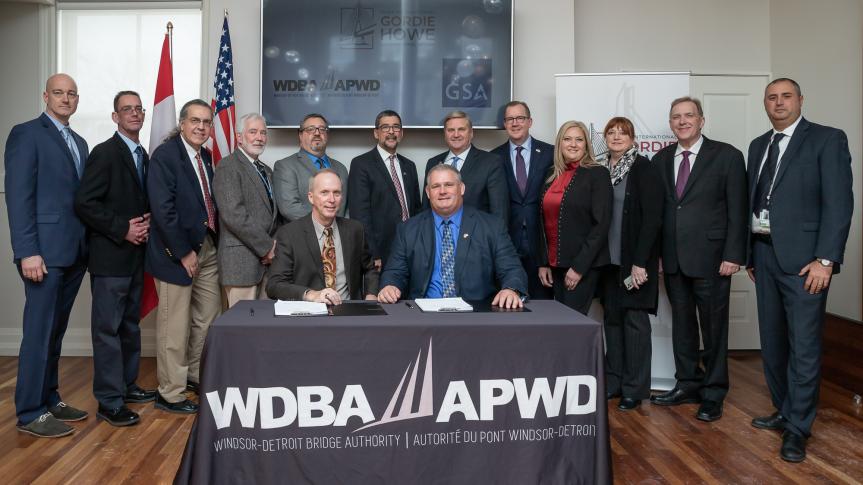Great Lakes Region inks deal for new LPOE at Gordie Howe Bridge

Years of planning, negotiating and work with customer agencies by a Great Lakes Region team recently culminated in agreement with the Windsor Detroit Bridge Authority (WDBA) to terms on a sublease for a new Land Port of Entry in Detroit, Michigan, for the planned Gordie Howe International Bridge.
On Nov. 13, the team convened with WDBA in Windsor, Ontario, where GSA Lease Contracting Officer Brian Krasowski and Bryce Phillips, WDBA chief executive officer, jointly executed the U.S. Federal Plaza Sublease, which puts in place the vehicle to provide a high capacity, state-of-the-art facility that will enable federal agencies to perform their functions when the new international crossing opens, projected for late 2024.
The sublease is a key component of this more than $4 billion project. Under the sublease, which has a term of 20 years firm with four 20-year options, the government is not obligated to pay rent but has responsibilities for staffing the LPOE for operations.
The economies of both the United States and Canada also stand to benefit, as the new infrastructure will help alleviate traffic at the busiest North American commercial border crossing, which carries more than 25% of all United States-Canada trade, approximately $1 billion per day.
Following the signing, WDBA led the GSA team on a tour of the future sites of both the U.S. and Canadian LPOEs and the areas where WDBA has started construction of the massive footings for the bridge’s two 722 foot towers that will anchor the cables carrying the new bridge.
When complete, this new international crossing will provide for the safe, efficient and secure movement of people and goods across the U.S.-Canadian border to support the economies of both countries, with a particular impact on Michigan and Ontario. Travelers will see improved highway system connectivity to enhance the seamless flow of people and goods, and federal agencies will have improved inspections operations and processing capacity to accommodate the flow of trade and travel.

 U.S. General Services Administration
U.S. General Services Administration